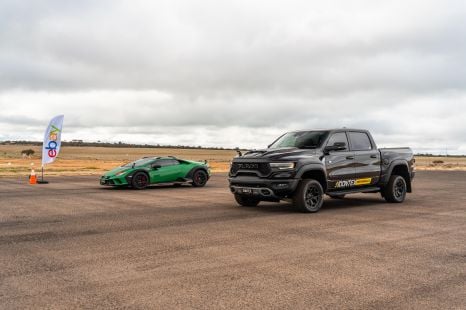

Paul Maric
1200hp RAM TRX vs Lamborghini Huracan Sterrato drag race
27 Minutes Ago
McLaren has already fettled its plug-in hybrid supercar. Along with a new Spider option, the coupe has been tweaked for 2024 and 2025.
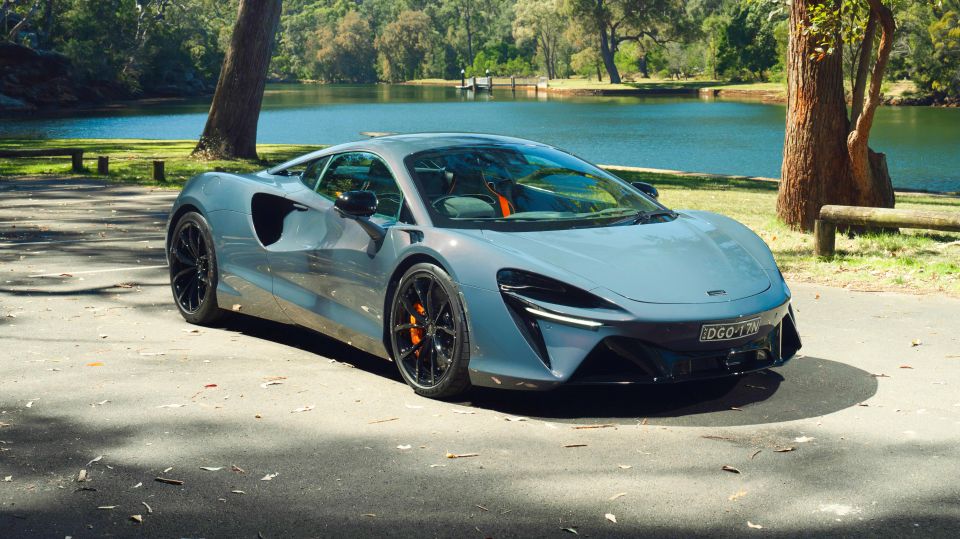


Contributor

Contributor


Contributor

Contributor
Where expert car reviews meet expert car buying – CarExpert gives you trusted advice, personalised service and real savings on your next new car.
Life moves pretty fast in Woking.
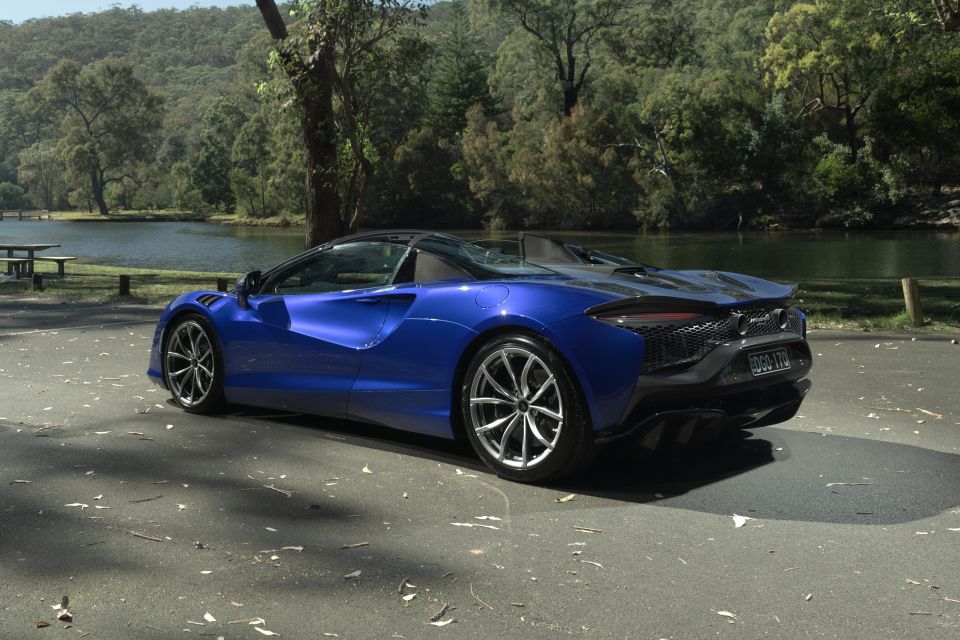
Hot on the heels of its first volume-selling plug-in hybrid supercar, the Artura, McLaren has lopped the top off to create the Artura Spider.
Creating a convertible version of a supercar is never easy. Weight is the enemy of handling and performance, and complicated folding convertible roof mechanisms are always heavy.
Throw in the fact that removing the fixed roof of any car – let alone one designed to make drivers feel alive at the limit of grip – undermines rigidity, and the poor engineers tasked with the job of creating the Artura Spider were facing an uphill battle.
But there’s more to this car than the wind in your hair. Based on feedback to the initial batch of Artura coupes, the Spider debuts an updated exhaust, revised suspension and engine mounting arrangements, a sharper transmission and more power.
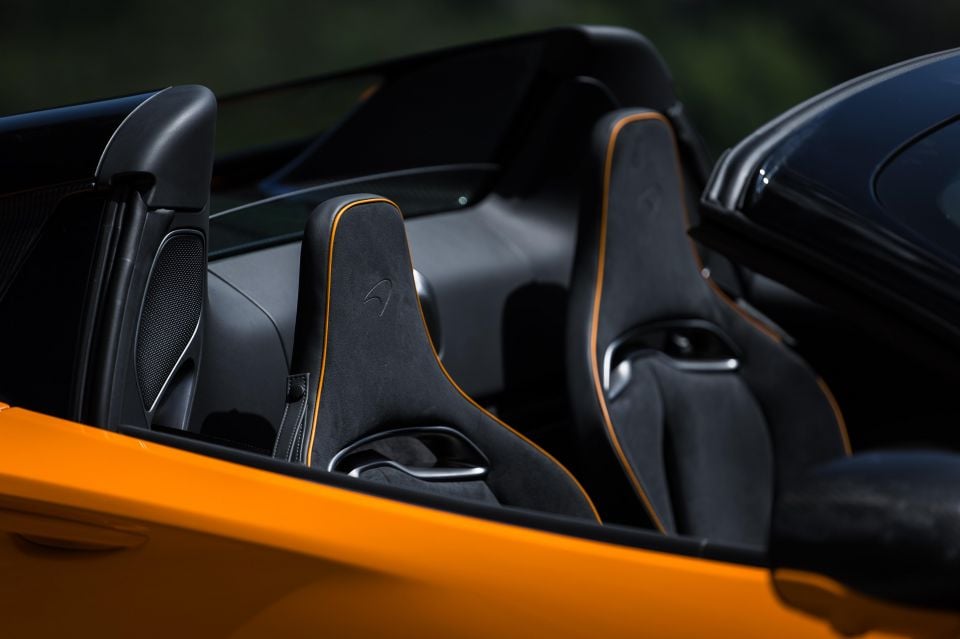
The same changes have been applied to the coupe and are now being offered to existing owners as a retrofit.
We spent some time behind the wheel of both cars in Sydney to get a feel for the changes.
Pricing for the Artura is up by $12,653 for 2025, while opting for the new Spider over the coupe costs an additional $47,700.
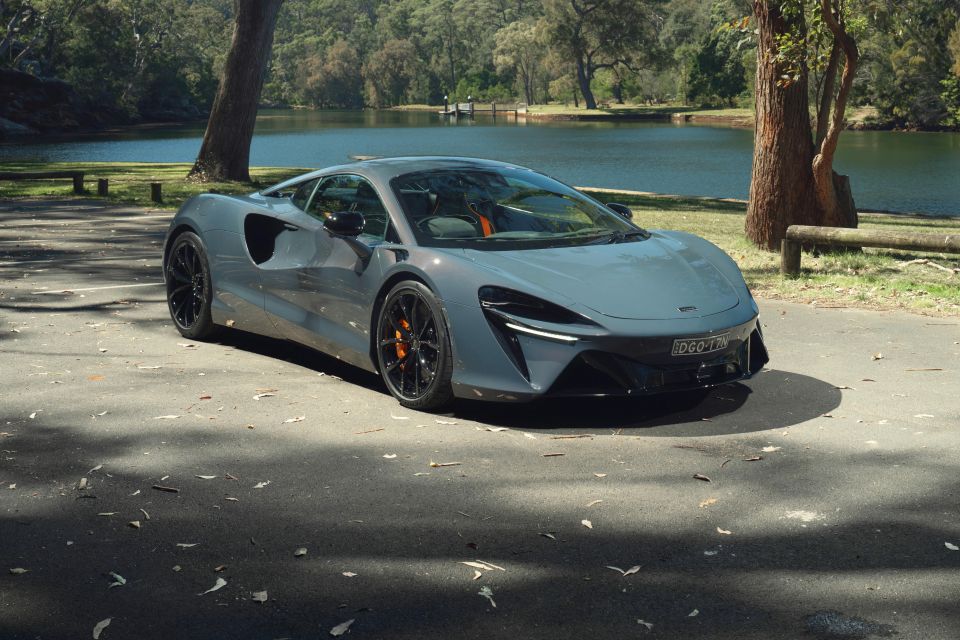
| Model | Price before on-road costs |
|---|---|
| 2025 McLaren Artura | $477,310 |
| 2025 McLaren Artura Spider | $525,010 |
To see how the McLaren Artura stacks up against it rivals, use our comparison tool.
Buy your new car without the stress. It's fast, simple and completely free.

Great service from Travis and team, second time I have used this business would not hesitate to recommend them to anyone
Craig C.
Purchased a Ford Ranger in Sunshine Coast, QLD
CarExpert helped Craig save $7,224 on his Ford Ranger, now let us save you on your next new car.
Get your BEST priceIf you’re tall, this might just be the supercar for you.
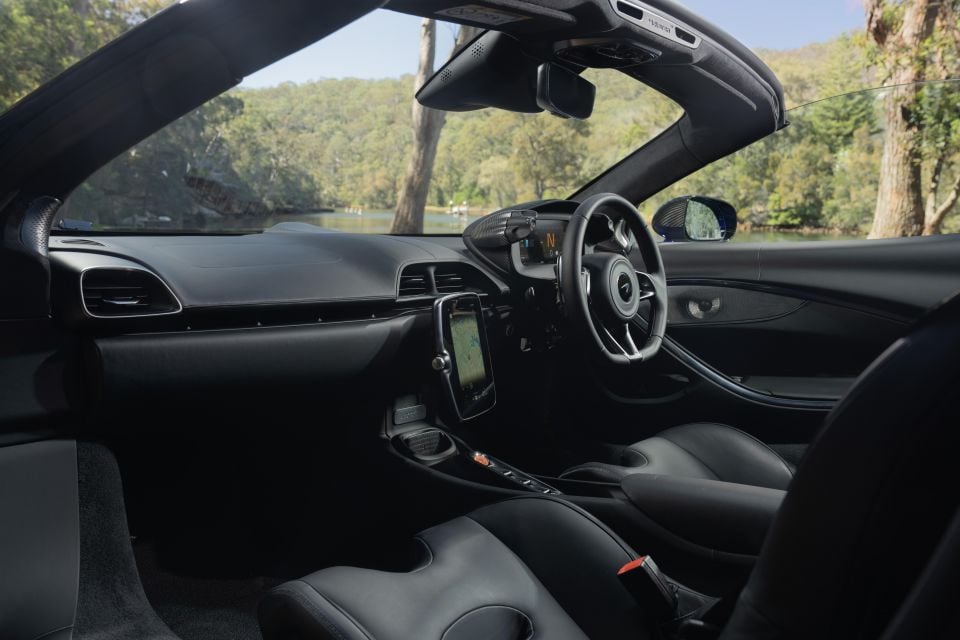
At six-seven, fitting into most Italian supercars is a bit of a nightmare for me, let alone while wearing a helmet on track. The Artura is a breath of fresh air.
The integrated steering wheel and instrument binnacle lift up nice and high to leave space for gangly legs and there’s a surprising amount of headroom. Being comfortable behind the wheel is important all the time, but it’s especially important if you’re planning to push hard on track. McLaren ticks that box emphatically.
It’s not an issue in the coupe, but headroom is especially good in the Spider… when you have the roof down. The roof itself takes 11 seconds to operate at up to 50km/h, so you can raise it in moving traffic if a sudden downpour hits.
In front of the driver is a perfectly sized steering wheel with no buttons on it. It feels odd to drive a car with such a pared-back wheel, but it also gets you in the mood to really drive. And it’s not as if you’re short of controls, with four skeletal column stalks behind the wheel and the drive mode rockers on the hood of the instrument binnacle.
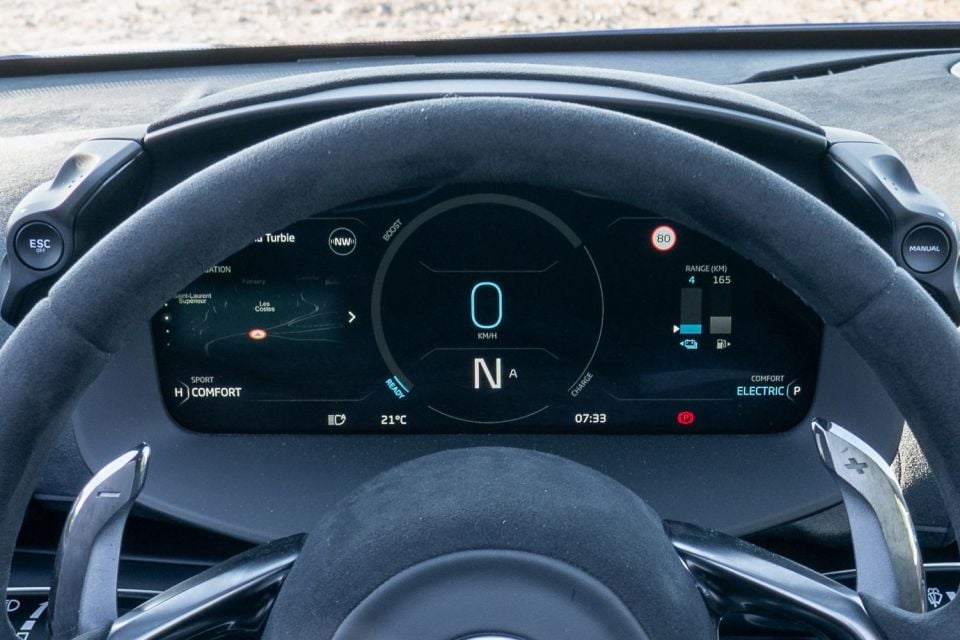
The graphics on that driver display are nice and crisp, and in Track Mode they put key information directly in front of you. Like the steering wheel, the design makes it feel as though unnecessary bits have deliberately been cast aside to keep the driver’s focus where it belongs.
Vision is excellent, given this is a low-slung, mid-engined supercar. You can see over the front of the car thanks to the low scuttle and massive windscreen, and the see-through buttresses linking the back of the cabin with the sculptural engine cover really do make a difference when it comes time to change lanes.
If you’re not keen on the full open-air experience, the Spider has the option to fold down the central rear window with the roof raised for more turbo V6 noises.
Last time I drove the Artura, it was on track. That meant the touchscreen wasn’t particularly relevant.
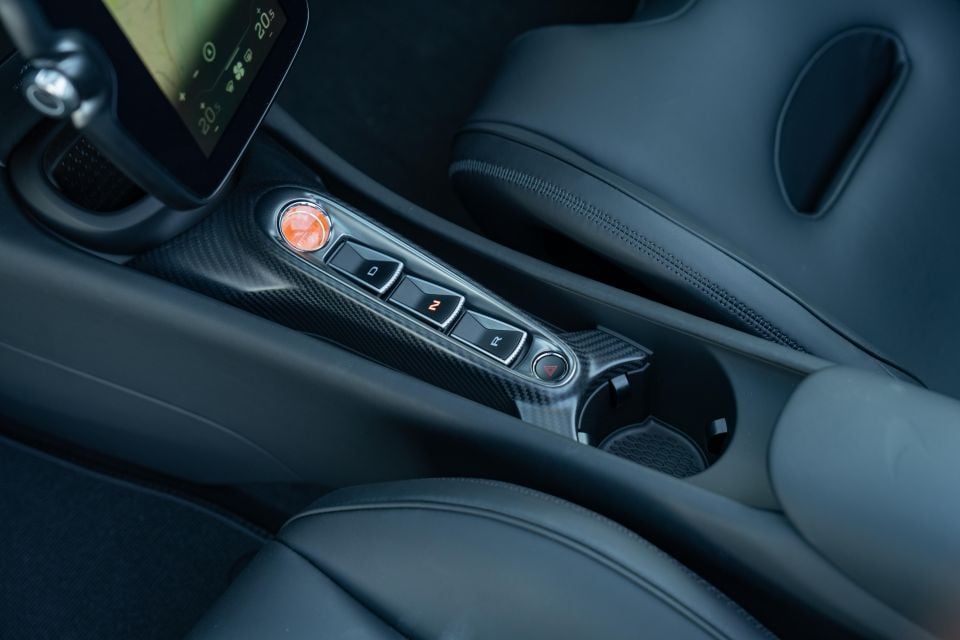
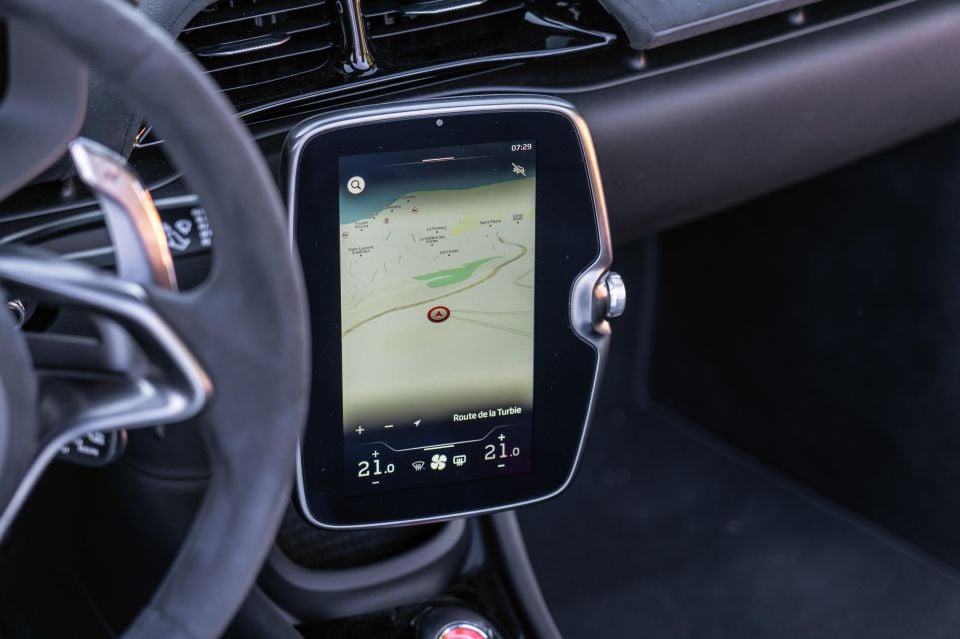
On the road, it works as advertised. The graphics are crisp and all the fonts are immediately identifiable as McLaren.
Once you’re dialled into the way the single button on the side of the display operates, it’s easy to jump from menu-to-menu on the move. Our tester even had a punchy stereo, which is a necessity to drown out the outside world with the roof down in the Spider.
As for the range of options, there are plenty of ways to make the Artura your own. The cars we drove each had a different look and feel, with finishes ranging from supple leather to racy Alcantara, different coloured stitching and plenty of carbon-fibre. I’d have mine with Alcantara, lots of carbon and orange stitching.
There’s a little bit of room behind the seats to store a jacket and the boot (under the front bonnet) measures 160 litres. It’s what you’d hope for in a car like the Artura, given the GTS exists for people who want to pack the kitchen sink.
To see how the McLaren Artura stacks up against it rivals, use our comparison tool.
Power in the McLaren Artura comes from a plug-in hybrid powertrain that mates a transmission-mounted electric motor with a twin-turbocharged petrol V6 engine.
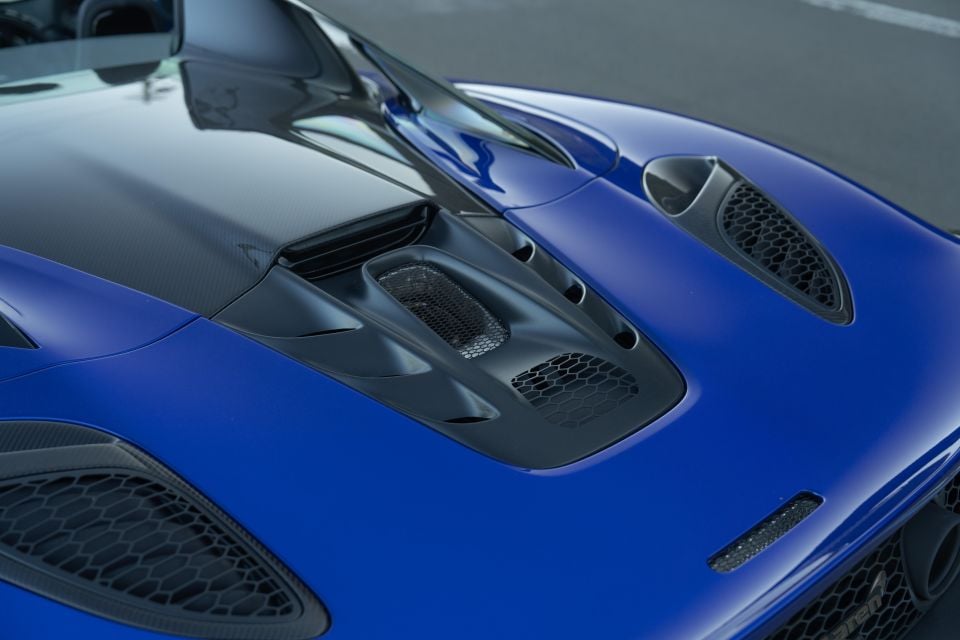
| Specifications | McLaren Artura |
|---|---|
| Engine | 3.0L V6 twin-turbo PHEV |
| Engine outputs | 445kW + 720Nm |
| Electric motor outputs | 70kW + 225Nm |
| System outputs | 515kW |
| Battery | 7.4kWh li-ion |
| Transmission | 8-speed auto with e-reverse |
| Driven wheels | RWD |
| Weight | 1457kg-1560kg |
| Fuel economy (claimed) | 4.8L/100km |
| Fuel economy (as tested) | N/A |
| Electric driving range (PHEV) | 33km |
| Fuel tank capacity | 72 litres |
| Fuel requirement | 98 RON |
| CO2 emissions | 108g/km |
| Emissions standard | Euro 6 |
The 3.0-litre engine was new to McLaren when the Artura launched, replacing the 4.0-litre twin-turbocharged V8 that has underpinned its push into the world of road cars (in various states of tune) since the MP4-12C debuted in 2011.
The electric motor is mounted to the eight-speed dual-clutch transmission.
That eight-speed wet-clutch transmission features no reverse gear and instead uses the e-motor when you’re going backwards. Compared with the seven-speed transmission in older McLaren cars, the ratios are stacked more closely for quicker acceleration.
To see how the McLaren Artura stacks up against it rivals, use our comparison tool.
McLaren says it focused on the noise, the transmission and the rear suspension when making changes to the Artura.
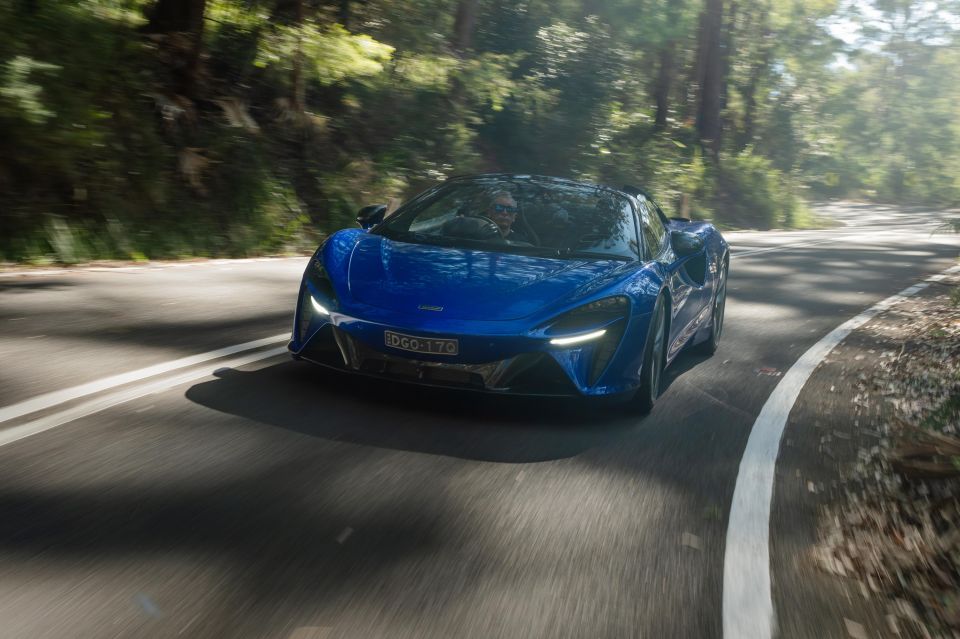
Immediately, the first of those changes is clear. McLaren has never been known for creating sonorous engines and the switch from a V8 to a V6 hardly makes for better noise.
Compared to the pre-update car, which felt a bit tuneless and buzzy, the update has an extra layer of character. It’s still not a screamer, but combined with the industrial huff and puff from the turbocharger there’s plenty to keep you interested.
Of course, the Spider makes it easier to enjoy that sound as well. With the roof down you get more drama, but it’s actually easier to enjoy the engine’s whooshes and whistles with the roof up and the rear window lowered. \
In town, the Artura does an impressive job impersonating a practical electric car. It starts silently and in hybrid mode, defaulting to the e-motor as you cruise around. With just 85kW on tap it’s not going to give the Tesla Model 3 any headaches off the line, but you’re not getting smoked by economy cars.

Regardless of which mode you’re in, the steering in the Artura is lovely. It’s constantly chatting with you compared to the systems in most modern cars, gently following cambers in the road and tugging in your hands. The wheel rim is slim and the lack of buttons refreshing.
Put your foot down and the petrol engine fires into life quickly and smoothly. There’s no real awkwardness as the petrol engine, transmission and electric motor work out how to mesh together, and the flare of revs is welcome given this is a supercar. Theatre is part of the point, right?
This was already a fast car and the power upgrade has only built on that. The 0-100km/h sprint takes a claimed 3.0 seconds, the 200km/h sprint takes just 8.3 seconds from standstill and flat out you’ll be doing 330km/h.
What’s noticeable, even in the most relaxed drive Comfort mode, is how torquey the Artura feels. It’ll happily sit in eighth gear at 80km/h, leaning on the e-motor to augment the petrol engine when you accelerate gently, and the dual-clutch transmission smartly drops a couple of gears when you demand a bit more.
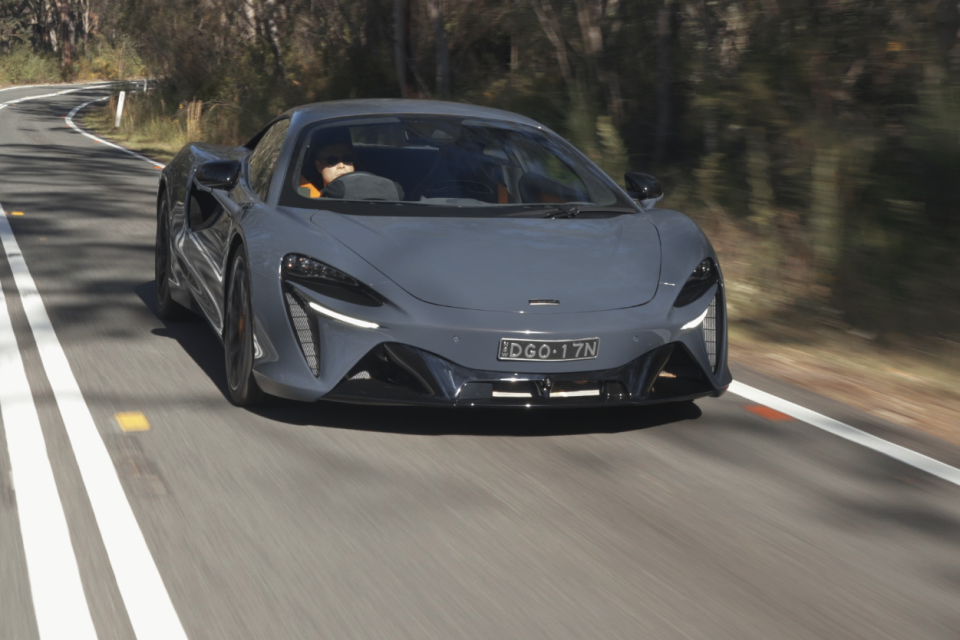
Combined with a genuinely impressive ride, the smooth-moving hybrid system means this is a supercar you could happily drive daily.
That hasn’t come at the cost of hard-edged performance, though. Flick the left-hand rocker above the instrument binnacle and the suspension hardens up, flick the right-hand toggle and the powertrain locks into Track mode for maximum attack.
Along with keeping the lithium-ion battery charged to ensure you have peak performance on offer all the time, it primes the powertrain to make sure electric and petrol power are working together to deliver peak punch.
It delivers an almighty shove from down low thanks to the hybrid system, before the electric motor’s shove tapers off to blend in with what’s on offer from the twin-turbo V6.
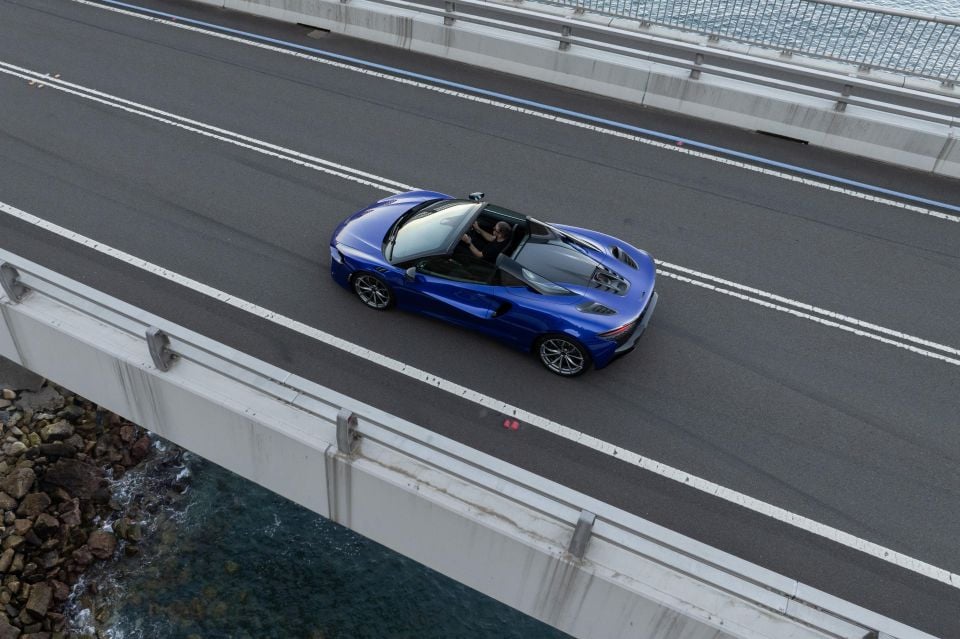
There’s always a worry with complex plug-in hybrid systems that while all the pieces will be fine in isolation, they will come slightly undone when it comes time to work together. That isn’t the case here.
The changes to the transmission are noticeable at full throttle. Previously, there was an awkward pause between gears as the engine cut, the electric motor offered torque fill and the transmission slammed home the next ratio; now it all happens faster and more smoothly.
It inspires more confidence in the car and makes its PHEV performance more accessible.
The convertible Spider body style is new for the 2025 model year.
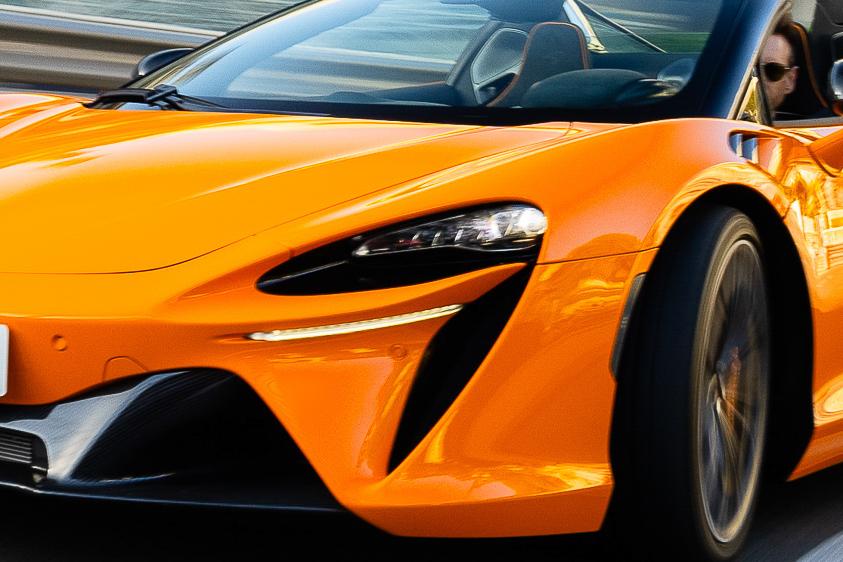

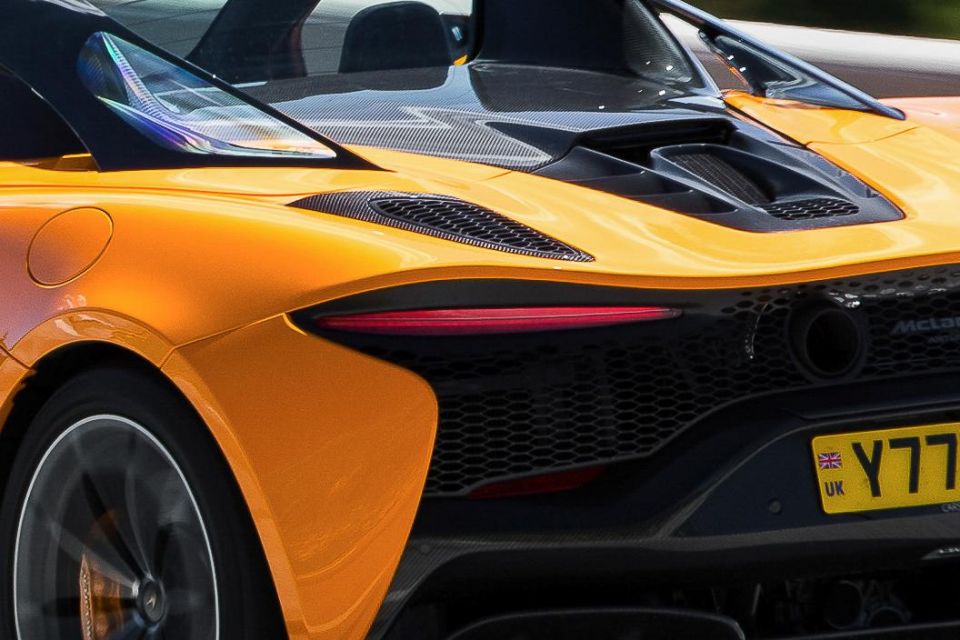

McLaren Artura highlights:
To see how the McLaren Artura stacks up against it rivals, use our comparison tool.
The Artura has yet to be tested by ANCAP or Euro NCAP. Neither safety authority has tested a McLaren model before and that’s unlikely to change with the Artura.
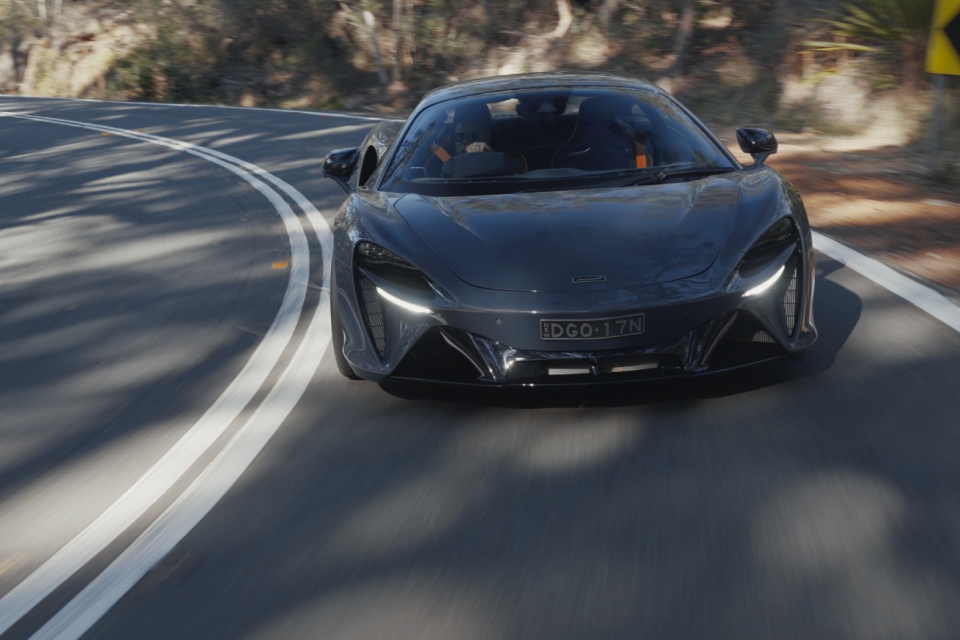
Where expert car reviews meet expert car buying – CarExpert gives you trusted advice, personalised service and real savings on your next new car.
Standard safety equipment includes:
Blind-spot monitoring, auto high-beam, rear cross-traffic alert and adaptive cruise are available as options.
The Artura is covered by a five-year vehicle warranty, a six-year battery warranty and a 10-year body warranty.
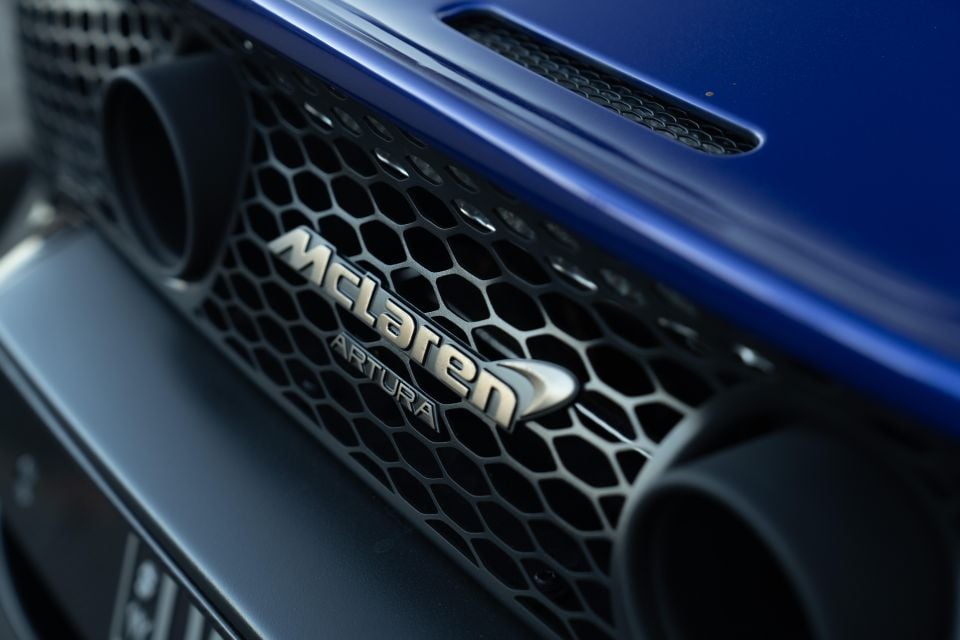
| Running costs | McLaren Artura |
|---|---|
| Warranty | 5 years, unlimited kilometres |
| Roadside assistance | 5 years |
| Capped-price servicing | 3 years |
| Total capped-price service cost | Free |
To see how the McLaren Artura stacks up against it rivals, use our comparison tool.
The Artura is proof that constant improvement works.

The first iteration was already an impressive first step into the world of plug-in hybrid motoring for the British brand and the 2025 model smooths out some of the rough edges to deliver a more cohesive drive.
Points to McLaren for offering it as a retrofit for existing owners, who usually miss out.
Unless you hate the spotlight, it’s hard to ignore the appeal of the new Spider as well. There’s very little compromise on the road relative to the coupe and it looks pretty damn sharp in the metal.

Interested in buying a McLaren Artura? Get in touch with one of CarExpert’s trusted dealers here
Click the images for the full gallery
Where expert car reviews meet expert car buying – CarExpert gives you trusted advice, personalised service and real savings on your next new car.
Scott Collie is an automotive journalist based in Melbourne, Australia. Scott studied journalism at RMIT University and, after a lifelong obsession with everything automotive, started covering the car industry shortly afterwards. He has a passion for travel, and is an avid Melbourne Demons supporter.


Paul Maric
27 Minutes Ago
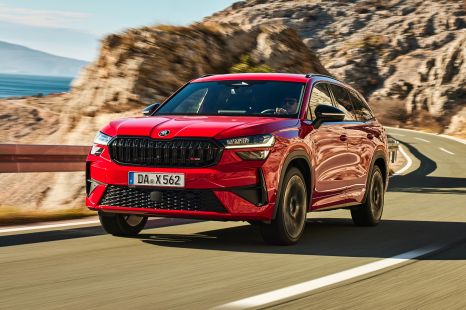

James Wong
7 Hours Ago
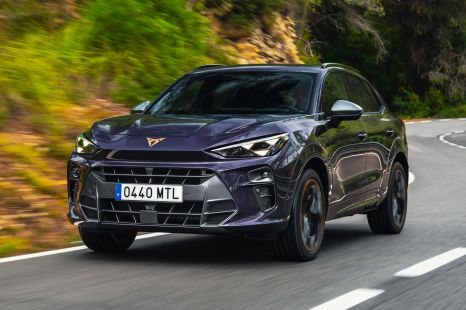

James Wong
7 Hours Ago


CarExpert.com.au
9 Hours Ago
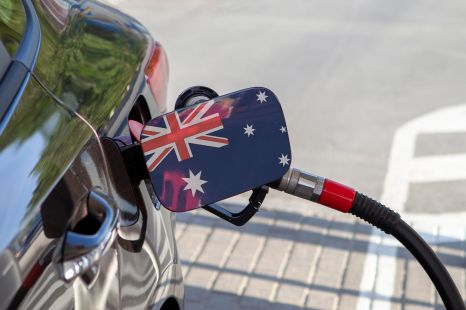

Damion Smy
9 Hours Ago


Alborz Fallah
9 Hours Ago